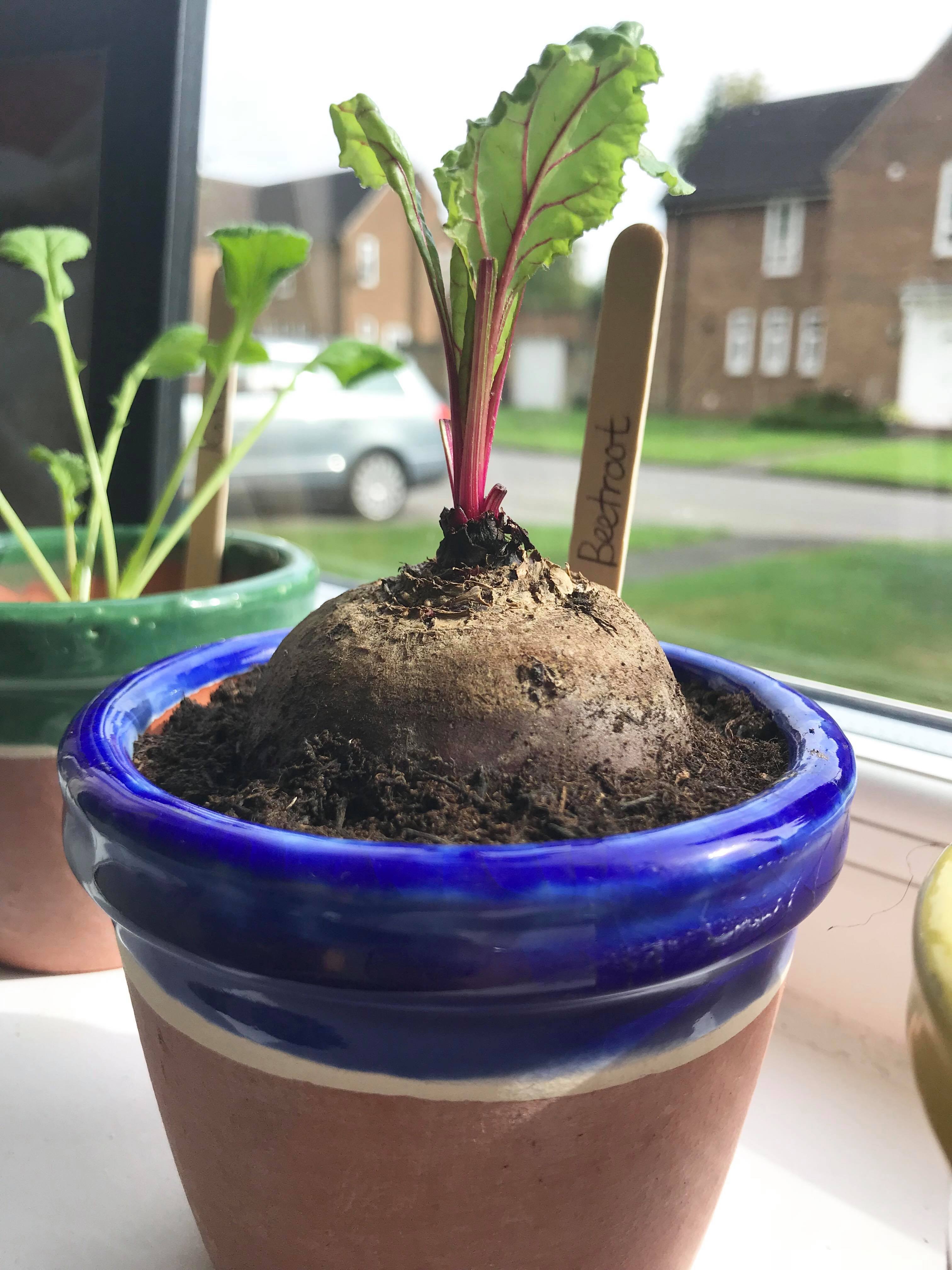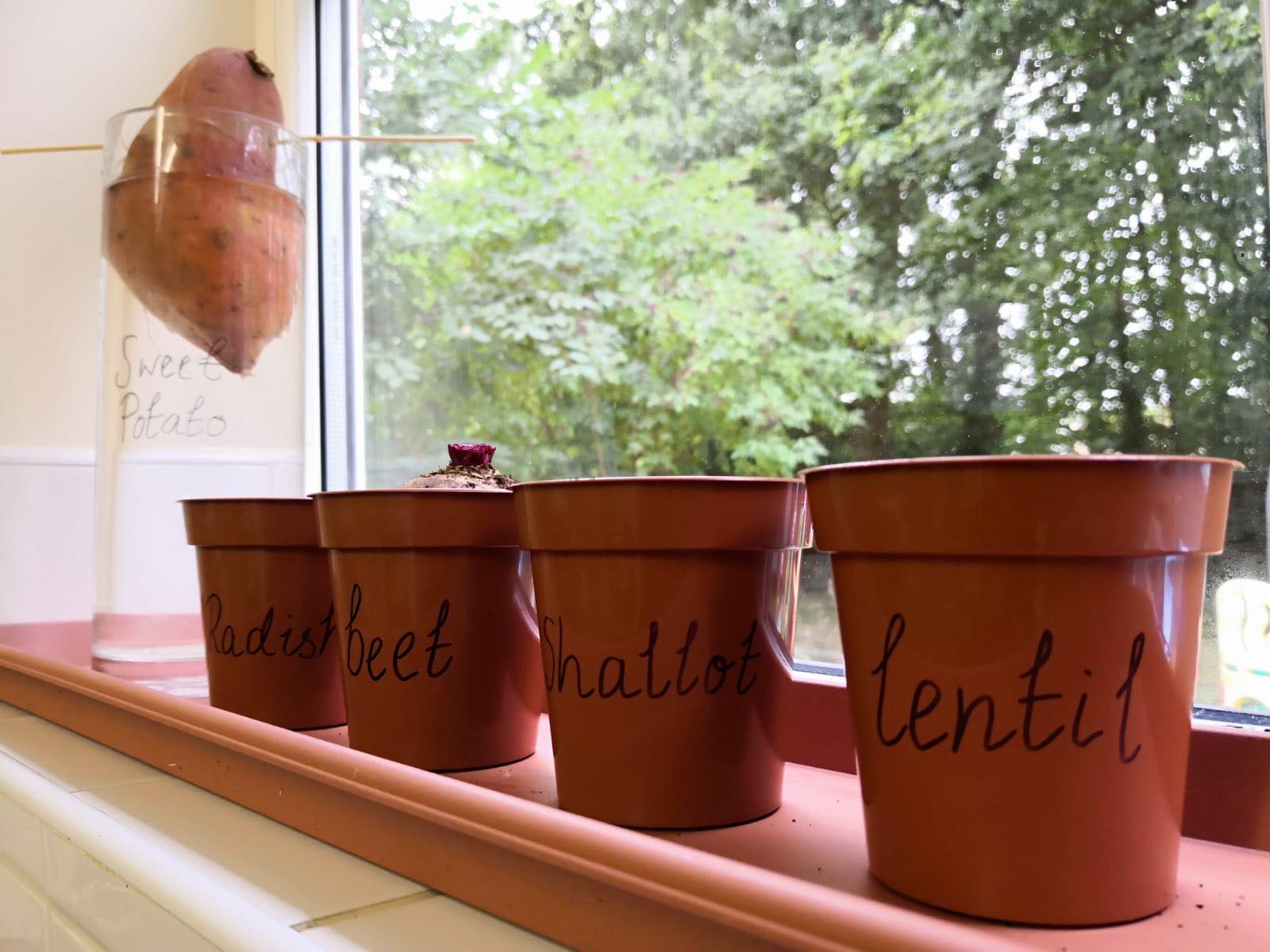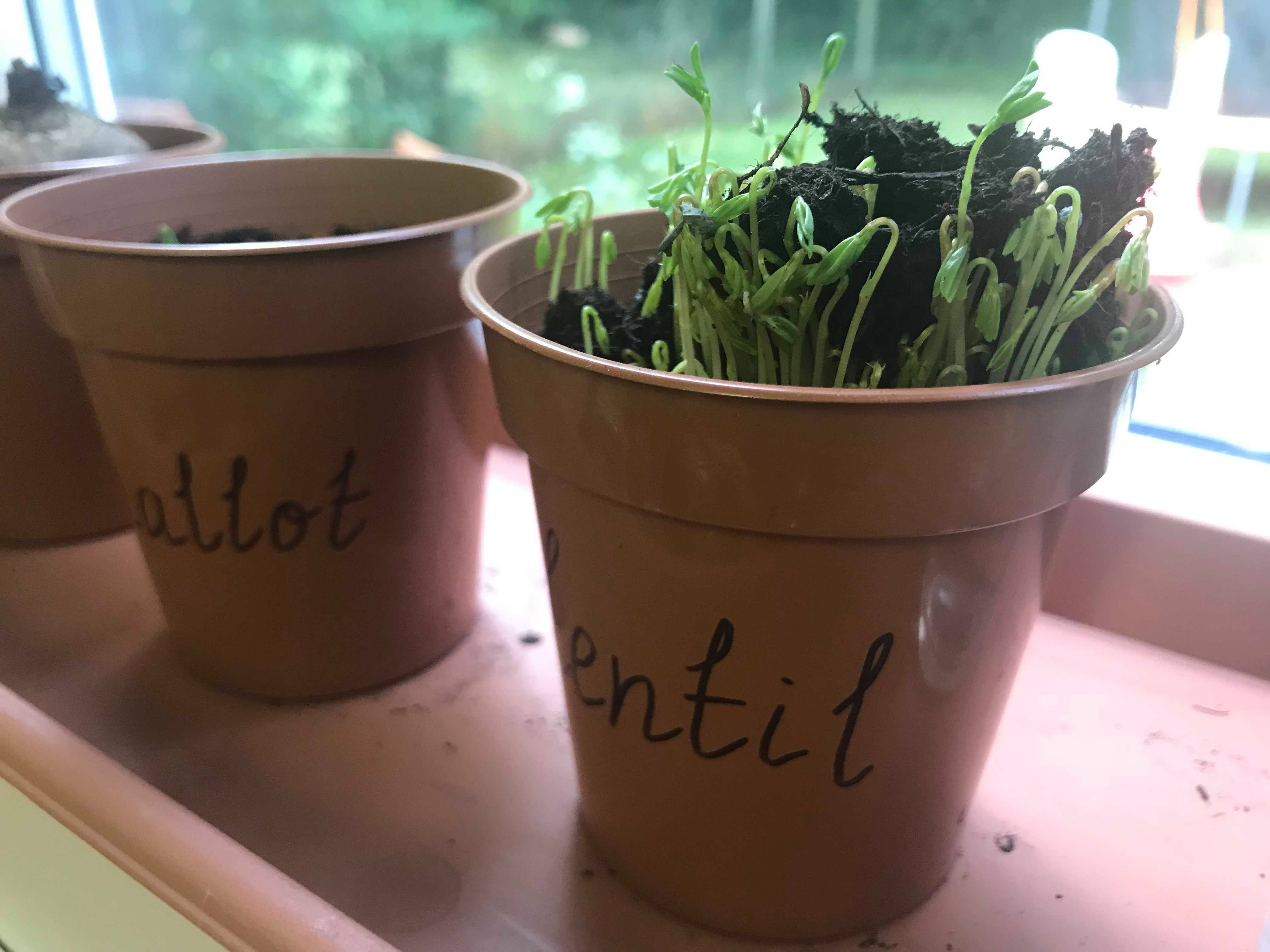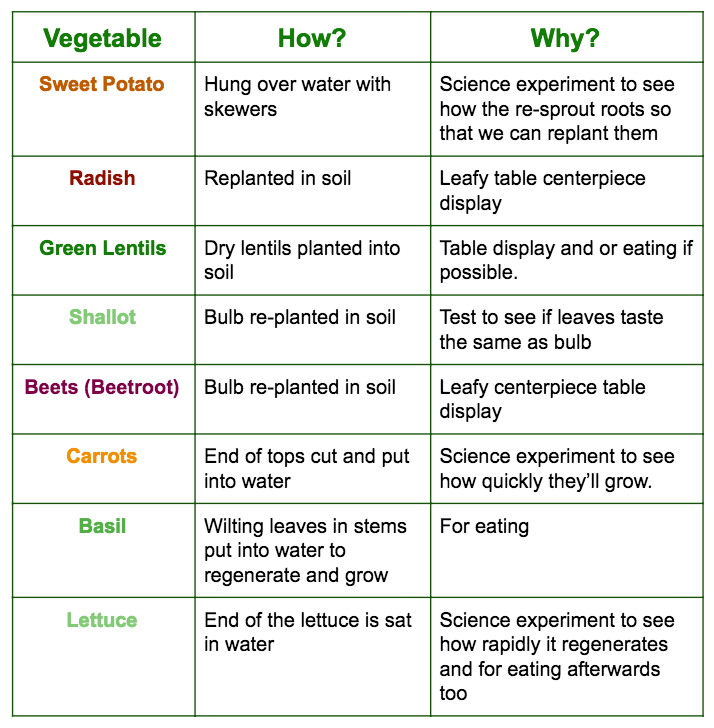
The Food and Agriculture Organisation of the United Nations educates its online readers on some key facts about food loss and waste. Today we are going to share a few:
- ‘Roughly one-third of the food produced in the world for human consumption every year – approximately 1.3 billion tonnes – gets lost or wasted.’
- ‘Fruits and vegetables, plus roots and tubers have the highest wastage rates of any food.’
- ‘The food currently wasted in Africa alone could feed 300 million people’.
- ‘Even if just one-fourth of the food currently lost or wasted globally could be saved, it would be enough to feed 870 million hungry people in the world.’
Wow right? Who will put their hand up with me and say they are guilty of chucking into the garbage food that is just slightly mangled and that didn’t get eaten at the end of the week? Everyone is guilty of it, but have you ever thought instead of throwing it into the bin, to actually replant it and regrow/repurpose it? Regeneration is a whole other ballgame.

Did you know there are so many vegetables, herbs, pulses and so on that one can put to reuse? You don’t even need to even use some of them for food. Autumn is coming in quick and interior design bloggers everywhere are scampering about setting up frames of tables filled with ‘Autumnal’ items like pine cones, leaves, and conkers. Let’s welcome to that table some food regeneration.
Did you know that beets and radishes, for example, grow beautiful dark green foliage with dark red stems? They would compliment a table centerpiece for an occasion instead of flowers. Some vegetables even produce flowers when replanted, for example; lentils (small blueish flowers), Jerusalem Artichokes (small yellow flowers that are reminiscent of sunflowers) and Chickpeas (look great in hanging baskets and have white/reddish blue flowers).

The List of vegetables you can regrow and eat is as long as someone’s arm. In fact, just doing this with your children is not only a great science project but it is paving the way to a zero waste mentality. It is teaching them an awareness of the earth and the issues we have created and It is about taking responsibility for the actions in your own house but in a super fun and creative way.
Some ideas of food you can regenerate:
Pumpkins:
Regeneration can go about in two ways. First, you can keep the pumpkin seeds when carving your pumpkin around Halloween time and scatter them outside, covering with soil. Or secondly, once Halloween is all over and you want to chuck your pumpkin, don’t! Dig a hole if you have a garden or a large deep pot and fill its up and around with soil and it will grow some more for you!
Tomatoes:
Lots of people don’t like the seedy middle part. Don’t chuck them! Cut out the middle keeping just the seeds. Rinse, remove any flesh and dry off the seeds. Then plant! They don’t even need to be grown outside if it is cold. Just as long as they are in direct sunlight and watered regularly throughout the week.
Spring Onions:
Don’t throw out the ends, just pop them into a small vase, bottom end in first, top end out of the water. Watch over the course of the week and see them grow upward before your eyes.
Basil:
Shop bought basil wilting and fading away? Don’t give up on it, cut a stem that is at least about 4cm tall and put in a glass of water. Watch it double in size as it grows.
Onions & Garlic:
They barely need any help at all to regenerate! Who has forgot a couple of shallots at the bottom of a bowl only to find that they have sprouted roots? Replant them in soil and grow your own! Put a clove of garlic in a pot with soil, water and watch it grow.
Lettuce & Celery:
Leftover ends? Don’t throw them away. Put them in water and watch them grow, then replant them in soil and watch the leaves and stems double in size.
Pineapple:
Bit of a nuisance throwing the pineapple head away right? It’s big and a silly shape and ends up tearing all the biodegradable food bags. Regrow it! Put it in some water and see the bottom grow. Then replant in soil!
I could go on… but I think you get the idea!
Cool fact: if you keep the seeds of one apple and plant them, you may find that different types of apple tree emerge. This is evolutionary as apple trees cannot pollinate themselves and require bees to do it for them. One lone apple tree will not do well, whereas two next to each with thrive. Learn more about bees and pollination HERE.

Foods we tried:

These are the results of our regenerations. The quickest regrowths were the lentils, shallot, beet, radish. Once they have grown, consider repotting them into some nice vases and displaying them as if they were flowers. We did and we think they add some character to our living area. Plus, it’s a great talking point!
Don’t forget to follow us on Twitter, Instagram, Pinterest, and Facebook!
 Contributor
Contributor
Grace Selous Bull is an arts education author and freelance blogger. Her book, ‘Potty About Pots: arts and crafts for home and school’ is aimed at children from 5-12 years old and takes them through a journey of ceramics through time. She is a full time Mummy of two girls, both of whom love being creative, and is married to her husband, Andrew, who does not.
Original content © 2018 Super Simple. Not to be reprinted without express written permission. Terms of Service.

